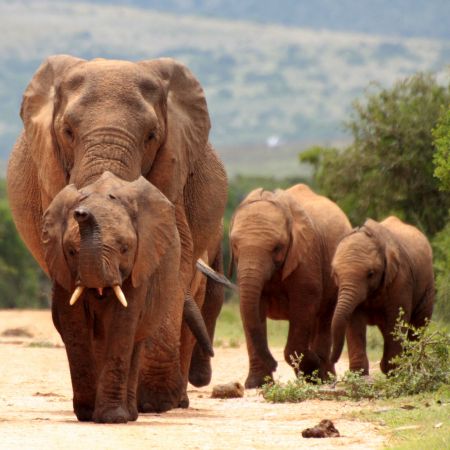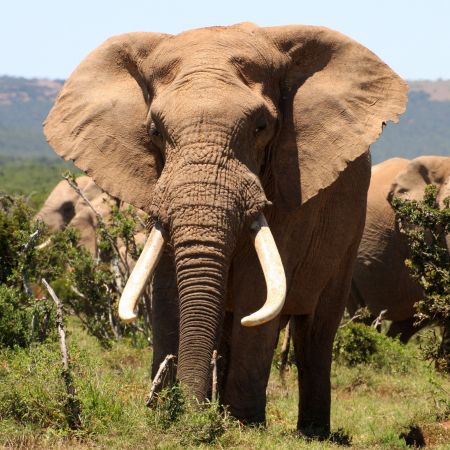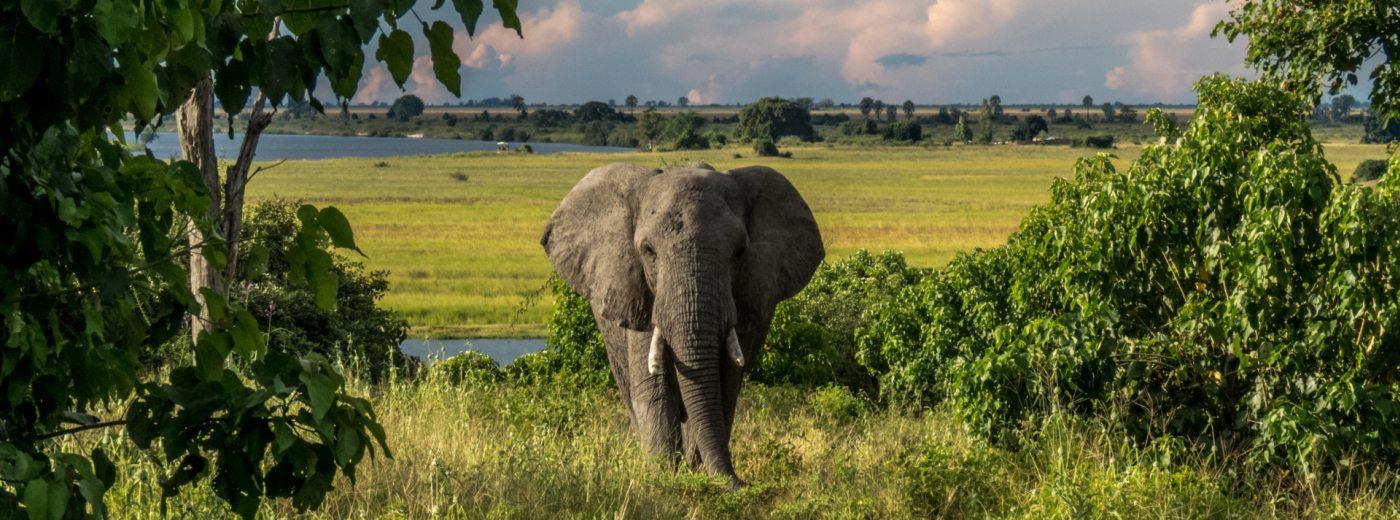The largest land mammal in the world
The elephant is the largest land mammal in the world, and adult male bulls can weigh up to a massive 6,000 kg. Both males and females have tusks, but the males tend to be larger. The tusks grow continually throughout their life, and the longest tusk ever recorded was 355cm. Elephants can live for as long as 60 years.
Two Species
There are two species of elephant - the African and the Asian. The African elephant has much larger ears than its Asian cousin - each ear on an African elephant can be as large as 6 feet from top to bottom and 5 feet across, and can weigh up to 100 pounds.
The Asian elephant's ears are small by comparison, and also conveniently shaped like the Indian subcontinent.
Their trunks are also different - the African elephant has two 'fingers' at the tip of its trunk, the Asian elephant has only one. These fingers help with picking food up, including even fine blades of grass!
Gestation Period
The gestation period for a female elephant is a staggering 22 months, and when born, the baby elephant has a matt of dark black hair on the top of his head and can weigh up to 120 kg. Within 20 minutes, the baby is up on his feet.
The baby will never stray far from its mother, and the other females in the herd will be protective towards it, always making sure that it is in the middle of a group for added protection
 The Matriarch of the Herd
The Matriarch of the Herd
Female elephants live together in close family herds of anything up to 25 related females. The matriarch female of the herd will be the mother, normally easily identifiable as being the largest elephant, and the rest of the herd will consist of her grown offspring and their offspring too. The matriarch dictates where the herd moves to, and what they do, whether it be feeding, bathing or sleeping.
Male bull elephants are either solitary or live together in small bachelor herds, and will only join the females to mate.
Uses for an Elephant's Ears
When elephants are alarmed, they will try to make themselves look even more imposing by spreading their large ears out, swishing their trunks, jerking their heads, and pawing the ground. A gland on the side of their face, just underneath their eye, also begins to weep. The ears also act as a form of 'air-conditioning' - to help cool itself down, the elephant will pump more blood to its ears and flap them around.
Elephants and Water
Elephants can go a couple of days without water, but they prefer wherever possible to drink and bathe daily. A large bull elephant may drink over 200 litres of water a day. Elephants are therefore never found far away from water, be it waterholes or rivers, and it is a common sight to see the entire herd drinking and then wallowing afterwards in the mud and seemingly having great fun. As well as a pleasant way to spend an hour, the mud acts as a protective layer against ticks.
 Feeding
Feeding
Elephants spend about 16 hours a day feeding, and will consume about 5% of its total body weight in food a day. Their primary diet is grass, shoots, and tree bark.
During the winter months, and periods of extreme drought, elephants will strip the bark and upturn tree trunks to feed off the roots in the absence of foliage.
Being a single stomached animal, nearly 50% of the food digested passes immediately through the gut again, so very little nutrient is taken in.
Because of their need to eat such vast quantities, elephants are a natural destroyer of habitat, and in certain areas in Southern Africa the environmental damage to the bushveld has become a major problem.
An elephant goes through 6 sets of molar teeth throughout its life. As one set gets worn down from the constant chomping and grinding of food, a new set pushes through. Once an elephant wears down its last set, however, they lose the ability to chew and digest food, and this will mean the end of their long life.

